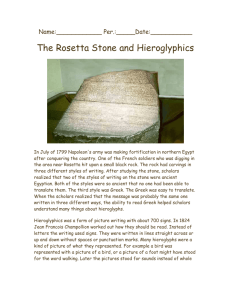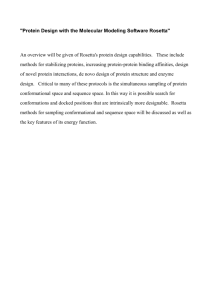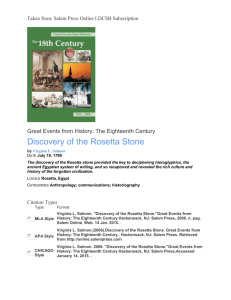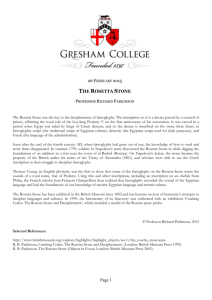ScurveWrightR
advertisement
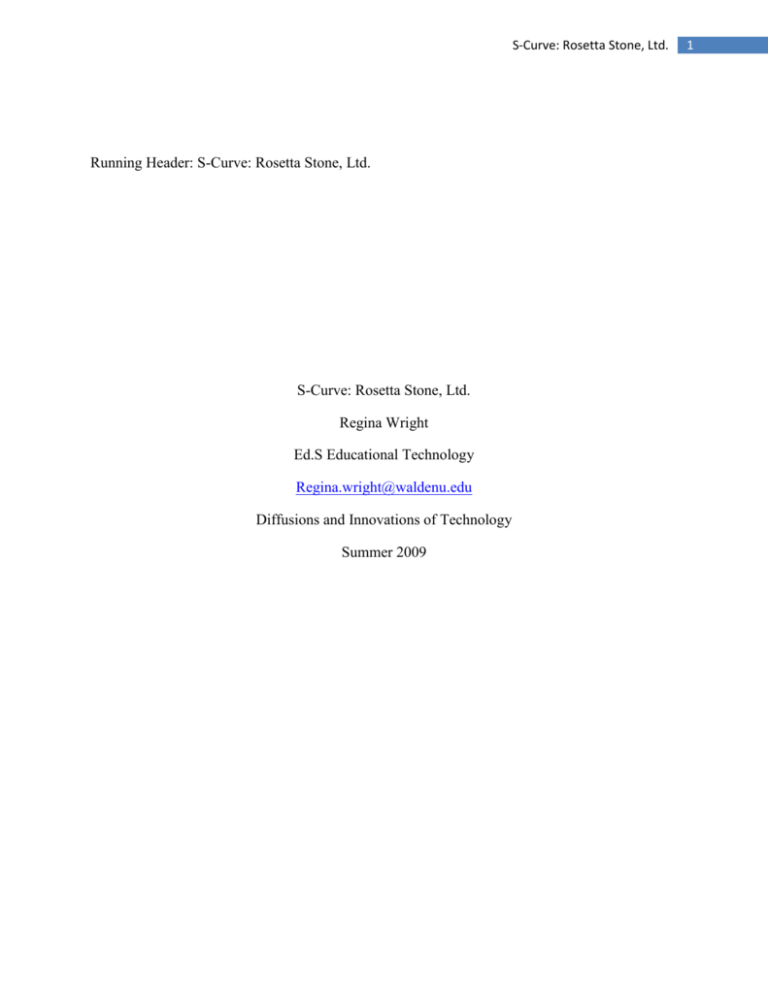
S-Curve: Rosetta Stone, Ltd. Running Header: S-Curve: Rosetta Stone, Ltd. S-Curve: Rosetta Stone, Ltd. Regina Wright Ed.S Educational Technology Regina.wright@waldenu.edu Diffusions and Innovations of Technology Summer 2009 1 S-Curve: Rosetta Stone, Ltd. () Rosetta Stone is a product that is produced for individuals, schools, the government, and the military (direct sales). In the S-Curve, these groups are combined to form a social system. The vertical axis expresses the revenue acquired by total direct sales to this social system. Each adoption in the social system is in a sense equivalent to a learning trial by an individual (in fact, if the individual tries the innovation prior to adoption, each adoption is indeed a learning trial). (Rogers, 2003, pp. 272,273) The horizontal axis displays the years that Rosetta Stone was first founded and introduced to the public, through the current year. It is here that the rate of adoption can be clearly seen in forming the s-shape. The data in this rate of adoption reflects the growth in revenue from 1992 to the current year, 2009. Due to lack of record of earning amounts for the early period under the ownership of Fairfield Language Technologies, an estimation of $5 million as starter revenue was used. In 2003, when management and ownership changed, the new ownership acquired the revenue of $15.5 million. In 2004, that revenue increased to $25.4 2 S-Curve: Rosetta Stone, Ltd. million. The next reported increase was in 2007, with revenue at $137.3 million. In 2008, the revenue was reported at $209.4 million. This is when it was decided to pursue making Rosetta Stone, Ltd. an Initial Public Offering (IPO). (Initial Public Offering of stock, government archieves, 2009) Given the economic status of the United States at this point in time, the learning of new languages offers marketability to prospective job applicants. The S-shaped adopter distribution rises slowly at first, when there are only a few adopters in each time period. The curve then accelerates to a maximum until half of the individuals in the system have adopted. (Rogers, 2003, p. 272) In 2003, new President/CEO Tom Adams, with his experience in international business led Rosetta Stone to expand globally to areas like London, and Tokyo. “Millions of learners in more than 150 countries have already used our software to gain the confidence that comes with truly knowing a new language. We’re continually improving our software technology and adding new products.” (Rosetta Stone Software, 2009) According to Rogers, (2003, p. 274), after the heart of the diffusion process, it is often impossible to stop the further diffusion of a new idea, even if one wished to do so. In 2006, the company name was changed to Rosetta Stone, Ltd. (Rosetta Stone Software, 2009) It was next sold to two investment firms, ABS Capital Partners, and Northwest Equity Partners. On September 23, 2008 it filed an Initial Public Offering (IPO) with the Securities and Exchange Commission. (Rosetta Stone Software, 2009) On April 15, 2009, Rosetta Stone raised $112 million in its IPO of stock with shares valued at $18. The stock closed at $25.12 per share. (Rosetta Stone Software, 2009) Revenue grew from the $15.5 million in 2003 (as Fairfield Language Technologies) to $137.3 million in 2007, representing a 73% compound annual growth rate. (Rosetta Stone 3 S-Curve: Rosetta Stone, Ltd. Software, 2009) Approximately 85% of revenue in 2007 was generated through direct sales. (Rosetta Stone Software, 2009) This innovation proved to follow the s-curve of adopter distributions. 4 S-Curve: Rosetta Stone, Ltd. References: Fairfield Language Technologies, Creator of Rosetta Stone(R) Language-Learning Software, Completes Management Buyout. (2006, January 6). Retrieved July 10, 2009, from NewsBlaze: http://newsblaze.com/story/2006010611260200001.mwir/topstory.html Fairfield Language Technologies, Creator of Rosetta Stone(R) Language-Learning Software, Completes Management Buyout. (2006, January 6). Retrieved July 10, 2009, from NewsBlaze: http://newsblaze.com/story/2006010611260200001.mwir/topstory.html Initial Public Offering of stock, government archieves. (2009, July 8). Retrieved July 9, 2009, from Wikipedia.org: www.sec.gov/Archives/edgar/data/1351285/000104746908010224/a2187940zs1.htm Lazo, A. (2009, May 11). On Wall Street, Rosetta Stone Tries New Lingua Franca. Retrieved May 15, 2009, from WashingtonPost.com: http://www.washingtonpost.com/wpdyn/content/article/2009/05/10/AR2009051002063.html?hpid=sec-tech Rogers, E. M. (2003). Diffusion of Innovations, Fifth edition. New York: Free Press. Rosetta Stone Software. (2009, July 8). Retrieved July 9, 2009, from Wikipedia: http://en.wikipedia.org/wiki/Rosetta_Stone_(software) 5
